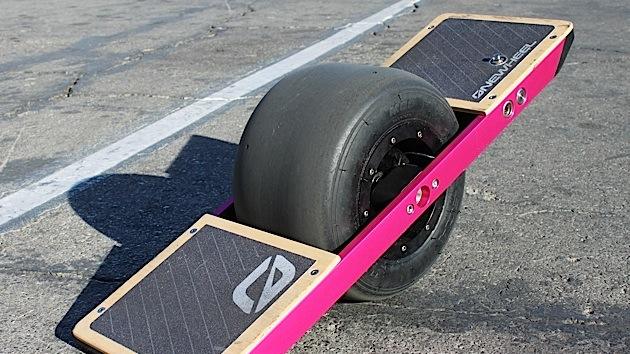KyleDoerksen
Latest

Well Balanced: hands-on with the final version of the Onewheel skateboard
When Kyle Doerksen brought his electric skateboard to CES last year, it looked like he stole a balancing prop from a local circus act. The Onewheel is the very image of its name: a single tire flanked by two wooden platforms. It almost looks threatening, but balancing on it is deceptively easy: The Onewheel uses a combination of accelerometers and gyro sensors to balance itself, which lets the rider focus on, well, riding. The board Doerksen showed us in January was a prototype, though -- recently, we caught up with the inventor to try out the final, factory-produced version of the electric ridable.

The Onewheel self-balancing, single-wheeled skateboard comes to CES, we take it for a spin (video)
It's hard not to do a double-take when first laying eyes on the Onewheel. After all, it is a single-wheeled skateboard that uses an electric motor, accelerometers, gyros and a microcontroller to give riders a smooth, self-balancing ride. The contraption's creator, Kyle Doerksen, brought a prototype by the Engadget trailer here at CES, and we couldn't resist putting it through its paces. Although the unit we played with was a pre-production model that still needs refining, you can color us very impressed. If the sight of a metal frame, wooden deck and a chunky go-kart wheel didn't convey a sense of great build quality, laying hands on (and picking up) the 25-pound package drives home its heavy-duty nature. When it comes to speed, the deck can go as fast as 12 MPH, but Doerksen tells us its acceleration is software-limited to allow for better self-balancing (and maybe even to protect users from overdoing it). As for range, Onewheel can go from four to six miles on a single charge thanks to a lithium battery, and it can be juiced up in two hours -- or 20 minutes with an "ultra" charger. What's more, the gadget sports regenerative braking to recoup roughly 30 percent of expended energy. Unfortunately, the device only has about 20 minutes worth of ride time in its battery, though that changes with terrain and personal driving style.

